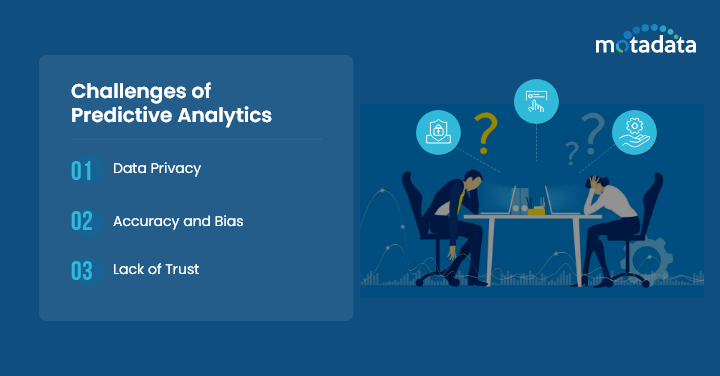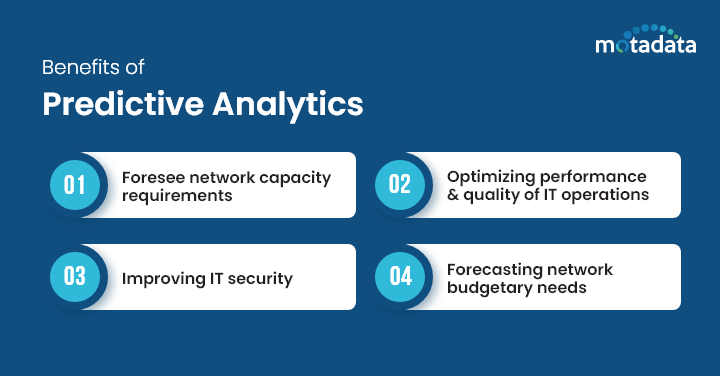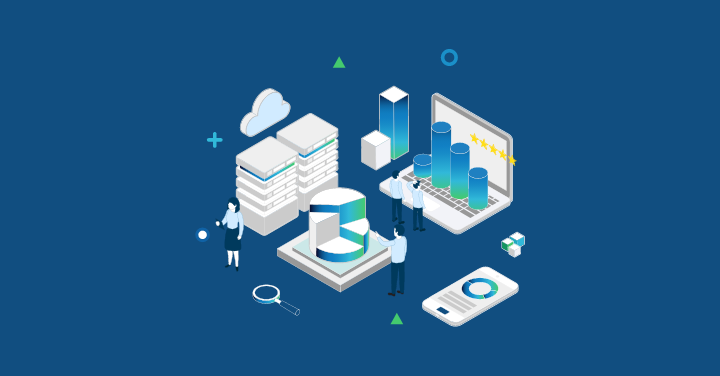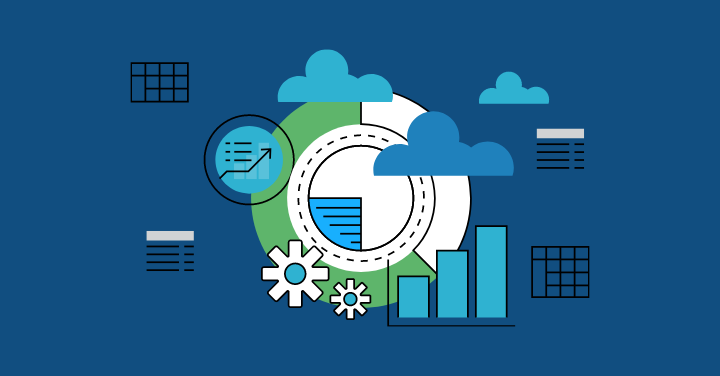Predictive analytics for networks are helping businesses optimize their network performance, anticipate network capacity related requirements, and eventually forecast future much more efficiently than ever.
Gartner has estimated the value of network monitoring software market at roughly $2.1 Billion, this figure is presently increasing at a growth rate of 15.9% annually.
The demand for predictive analytics in network monitoring software has grown beyond enterprises and datacentres.
This technology can help users predict the future network behaviours with surprisingly 95% accuracy!
This accuracy makes such network monitoring software’s increasingly viable option thinking from a financial standpoint.
Those businesses who can understand the unique advantages of predictive analytics are advancing with an edge over competition.
These businesses are using this technology to revamp the way they’re monitoring the network performance, therefore bringing increased accuracy to their forecasts of network reliability, predicting network issues, and improving the capacity of IT operations and services as user’s demands evolve.
A unique combination of network monitoring software and Artificial Intelligence stands to provide a substantial leap ahead.
What is Predictive analytics?
Predictive analytics can be defined as a fundamental paradigm shift for network and IT infrastructure analysis.
It makes future predictions which significantly improves decision making process with the use of Machine Learning (ML) and Natural Language Processing (NLP).
This technique uses the current available data to make predictions about the future. It involves study of current and historical events.
Typically, this data can be used for network capacity planning purposes.
This kind of network intelligence plays a key role in IT infrastructure Operations Management.
How Does Predictive Analytics Works?
With the rise of big data, where massive amounts of information are collected and analyzed from different sources, technologies like predictive analytics have become essential for planning and predicting in various business applications.
For predictive analytics, big data is like a treasure of a vast amount of information needed to create powerful models and systems.
Thanks to cost-effective storage methods like cloud computing, businesses of all sizes can now harness data-driven technologies.
These data models serve different business needs like:
- Predict future buying trends
- Assess how equipment is performing
- Plan production schedules based on demand and available resources
To create predictive models from raw data, you can use specialized tools such as data mining tools.
Challenges of Predictive Analytics
1. Data Privacy
Predictive analytics need access to sensitive user data for making accurate predictions. This poses the risk of sensitive information getting exposed to an unauthorized individual.
2. Accuracy and Bias
It’s important to note that the accuracy of a predictive model directly depends on the accuracy and the quality of the data it’s trained on.
If your data is plagued with bias, incompleteness, and inaccuracies, your predictive analytics may generate results like:
- Incorrect recommendations
- Poor user experiences
- Reinforcing existing biases
3. Lack of Trust
Many users might be uncomfortable with predictive analytics, especially when they are unaware of how their data is being used for predictions.
This unawareness coupled with lack of transparency can lead to hesitancy and decreased adoption of the application.
Benefits of Predictive Analytics
Predictive analytics goes beyond the typical network monitoring paradigm with the use of historical machine data to prepare an actionable dashboard of future predictable network operations.
This may help IT departments from all business verticals detect anomalies and prevent future bottlenecks & network congestion.
Traditional method is to set threshold alerts to get a timely update.
Machine learning can improve network performance & lower down human intervention in a number of ways, including:
1. Foresee network capacity requirements: Allow IT administrators to anticipate network capacity requirements and accordingly advance the hardware procurement process.
2. Optimizing performance & quality of IT operations: Scan historical IT data and pin-point recurring error rates or any component network failures accordingly take preventive action.
3. Improving IT security: Mitigate any cyber security threat by recognizing anomalies in IT data originating from applications, systems, or IP addresses.
4. Forecasting network budgetary needs: Map out trends in overall network usage and plot predictions based on the performance to forecast budgetary needs. With capacity planning comes budgetary planning.
Predictive Maintenance of Application Health
Predictive maintenance of application health in real-time helps ITOps teams to detect degradation in application health if there’s any.
It also helps them to respond to it before it makes the operations stand still.
For this, it first compiles available generated data by application like:
- Configuration data
- Network logs
- Application logs
- Performance logs
- Error logs
After that, machine learning methodologies analyze the data across different dimensions to determine the application’s normal behavior.
With new data entering the application, the model identifies unusual patterns if there are any and then sends it to the IT personnel, preventing it from becoming a business-critical outage.
Key Use Cases
As mentioned in the above section, the use of predictive analytics for networks offers enterprises a smart way to proactively mitigate network bottlenecks, prevent outages, and other major issues before they happen.
Let us go through some of the key use cases of predictive analytics:
- Resolution of delivery delays and troubleshooting storage redundancies in case of datacentres
- Introducing continuous learning capabilities also known as cognitive learning to network monitoring software
- Save time by being independent of human inputs as machine does most of the work.
- Determine and optimize network performance by predicting network capacity related problems accurately
- Study trends in network traffic patterns, considering usage type and also get alarms and warnings on time
- Get clues on any cyber security threat which generally escape human observers but can’t escape machine driven intelligence.
Motadata goes Beyond: from Proactive to Predictive
We discussed all the aspects of predictive analytics from its challenges, benefits, to use cases.
Now, if you are looking for a solution that can empower you with the power of predictive analytics, look no further than Motadata.
Motadata’s AI engine ingests and analyzes historical data from all corners of your IT setup – logs, metrics, network flows, applications.
This deep dive unearths patterns and trends, allowing Motadata to predict future issues like performance dips, outages, and security threats.
Early warnings let you nip problems in the bud, optimize resource allocation, and avoid costly downtime.
From reactive headaches to proactive peace of mind, Motadata rewrites the IT rulebook with predictive insights.
So, what are you waiting for? Get your free trial today to see Motadata right in action.
You can also schedule a demo or contact us for more information.








